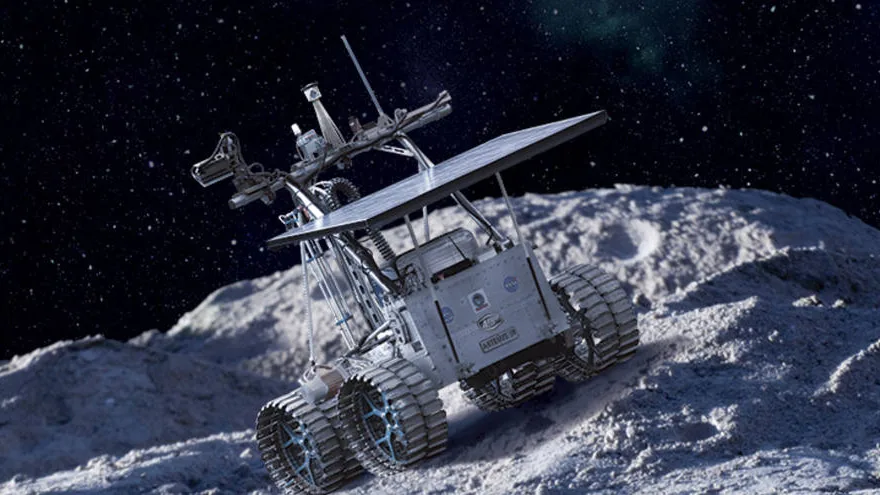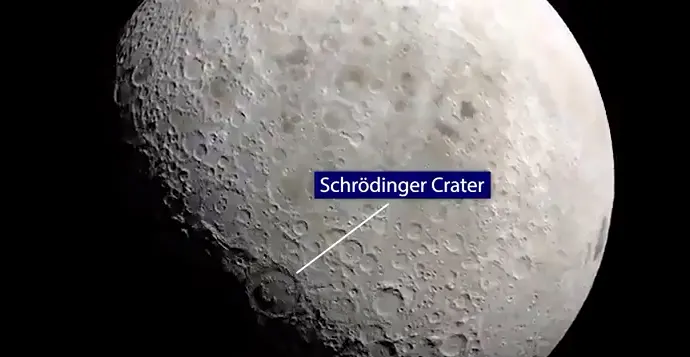
CanMoon mission trains Canada's future leaders in lunar exploration
What's Up In Space? Training Canada's new generation of lunar explorers!
In the next decade, a new wave of lunar exploration is set to take off, and if you wanted to meet some of the future leaders and scientists for these missions, there was no better place to be, over the past two weeks, than the University of Western Ontario.
Walking through the hallways of a fairly non-descript campus building, two small signs, attached to the doors of two otherwise unremarkable classrooms, are the only clues that there's some pretty out-of-this-world science taking place inside.

Gathered in these rooms are a few dozen people - undergraduates, graduates, post-docs and faculty - who are involved with planning and science of the Canadian Lunar Sample Return Analogue Mission, or CanMoon for short.
"CanMoon is a simulated Moon mission, where we're looking to return samples from the surface of the Moon," says Professor Gordon 'Oz' Osinski, the director of the Institute for Earth and Space Exploration at the University of Western Ontario. "This is in preparation to get Canada and Canadians ready for joining NASA and other world space agencies in returning robots and eventually humans to the Moon."
As a simulation, all of the action for the CanMoon mission takes place here on Earth. The minds of the students and faculty involved, however, are squarely focused on how you would run an actual mission, with a real, multi-million dollar rover, as it roamed around on the surface of the Moon.
"Here at Western, we have Mission Control, which pretty much what you see in Apollo 13 or any other space movies," says Patrick Hill, one of the Science Leads for the CanMoon mission. "From this station, we send wireless commands and direct the rover. We have a field of view from our camera, and that is identical to what we would expect on a planetary exploration mission."
CanMars missions, run in previous years by the UWO team, have used a real Canadian Space Agency robot known as MESR, the Mars Exploration Science Rover. The team used MESR in the 'Mars yard' at CSA headquarters, and out in the field near Hanksville, Utah. Tanya Harrison, who was a member of the CanMars team, identified the Utah field location as being an excellent analogue for Arabia Terra on Mars.
CanMoon's 'rover', on the other hand, is actually a team of humans doing the work of a robot, on Lanzarote, in the Canary Islands.
Regardless, though, the rover team plays their part brilliantly, sending back views of the analogue site that appear exactly as they would in a real rover mission - 100% human-free, focusing on the terrain and the potential sample sites. When moving from site to site in the analogue area, they walked at a speed of just one kilometre per hour, to matched the slow pace of real rover.
According to the team, the Lanzarote site, with its recent lava flows, is an excellent analogue for the Schrödinger impact crater, on the Moon's far side, near the south pole.

Schrödinger crater is indicated in this view of the Moon's far side south pole, taken by the Lunar Reconnaissance Orbiter. Credit: NASA
YOU'RE ON AN AIRLESS, LIFELESS MOON WITH TWO WEEKS TO LIVE. NOW GO!
Along with testing exactly what you could do with a sample return mission, one of the fundamental questions involved in a lunar rover mission is how do you get the most out of a robot that may only survive for two weeks after it lands?
The Moon is a very harsh environment to explore. A solar-powered rover can enjoy uninterrupted operations during the 14-day-long lunar day. The only problem would be keeping sensitive instruments out of direct sunlight, to avoid them overheating as temperatures climbed to 100°C. The equally-long lunar night, however, can be fatal to such a robot. Without the light from the Sun, temperatures plunge down to around -173°C, and a rover would need a way to store or produce two weeks worth of heat, to keep its instruments and computers from freezing solid.
A robust lunar lander and rover team, such as China's Chang'e 4 and Yutu 2 combo, currently deployed on the far side of the Moon, can ensure a longer mission life. The design of the Yutu 2 rover includes heaters to keep its instruments warm during the night, and it takes a break at solar noon to protect them from direct sunlight.
What do you do, though, if you can only afford to send a smaller robot? Exactly how do you make the best of the 14 days of mission time you'll have before your rover potentially stops roving?

A concept Canadian rover from Canadensys Aerospace Corporation. Credit: Canadensys
According to Cassandra Marion, the Mission Operations Manager for CanMoon, one of the major tests being done with CanMoon is to design 24/7, real-time operations for a lunar rover mission.
"Once we do have a rover mission on the Moon," Marion says, "it is going to be different than operations on Mars. On Mars, there is quite a lag in communications with a rover, but on the Moon, it will be a couple of seconds delay, rather than many minutes delay."
"Essentially, we are tweaking Mars operations, and what we know of how rover operations work best, so that it suits this continuous flow of data and communications with the rover," Marion explained.
REMARKABLE DIVERSITY
One remarkable aspect of the CanMars and CanMoon missions run by the Western University team is the diversity of the participants.
"This team, as with all planetary missions, is extremely diverse and interdisciplinary," says Hill, as the members of the team range from undergraduate students all the way up to research scientists, from the fields of physics, geology, engineering, and astrobiology, just to name a few.
"We also have a majority of women participants on the team," Hill added.
CanMoon came together as part of the Canadian Space Agency's Lunar Exploration Analogue Deployment program (LEAD) and was organized by both Dr Gordon Osinski from the University of Western Ontario, and Dr Ed Cloutis from the University of Winnipeg.
In addition to students from both of those schools, it was also opened up to a larger number of participants from across Canada by including SEDS, the Students for the Exploration and Development of Space, a non-profit organization with chapters around the world, which provides post-secondary students with the chance to participate in educational and engineering projects, to promote space exploration.
CANADA'S FUTURE ON THE MOON
When NASA first sent humans to the Moon, 50 years ago, Canadian technology and Canadian engineers helped the Apollo missions to succeed.
With NASA's current plans for a return to the Moon aiming for the year 2024, Canada has already committed its support, at the very least with technology.
With the skills they learn during this mission and the innovative changes they make to rover operations based on their experiences, any of the members of this year's CanMoon team, and those that take part in future CanMoon missions, will be in a position to ensure Canadian technology and ingenuity once again contribute to the success of lunar missions.
